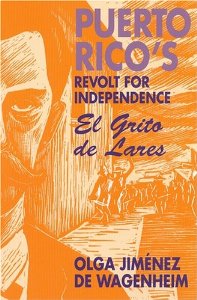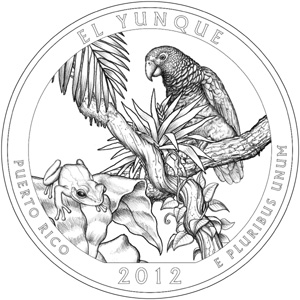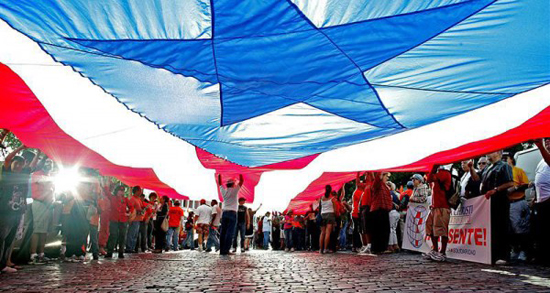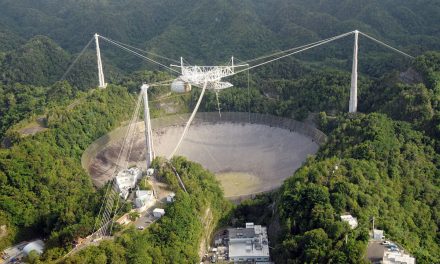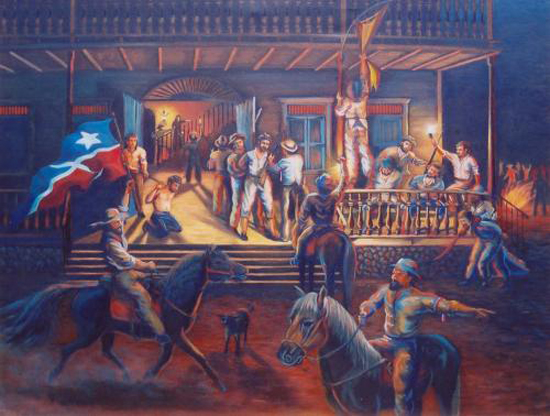
El Grito de Lares by Leonardo Rivera
El Grito de Lares (The Cry of Lares) also referred as the Lares uprising, the Lares revolt, Lares rebellion or even Lares Revolution was the revolt against Spanish rule in Puerto Rico on September 23, 1868, in the town of Lares, Puerto Rico.
Seeds for revolt
In the 1860s, the government of Spain was involved in several conflicts across Latin America. It became involved in a war with Peru and Chile, and had to address slave revolts in Cuba. Puerto Rico and Cuba also suffered at the time a severe economic crisis due to increasing tariffs and taxes imposed by a mercantilist Spain on most import and export goods the Spanish crown badly needed these funds to subsidize its troops in an effort to regain control of the Dominican Republic.
In the mid 19th century in Puerto Rico, many supporters of independence from Spain and others who simply called for liberal reforms were jailed or exiled. However, in 1865 Spain attempted to appease the growing discontent of the citizens of its remaining colonies in the continent by setting up a board of review that would receive complaints from representatives of the colonies and attempt to adjust legislation that affected them. This board, the “Junta Informativa de Reformas de Ultramar” (Overseas Informative Reform Board) would be formed by representatives of each colony, in proportion to their collective population, and would meet in Madrid. The Junta would report to the then Minister of Foreign Affairs, Emilio Castelar.
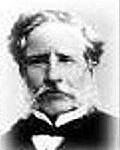
The Puerto Rican delegation was freely elected by those eligible to vote (male caucasian property owners), in a rare exercise of political openness in the colony. Segundo Ruiz Belvis was elected to the Junta representing Mayaguez, Puerto Rico, something that horrified the then governor general of the island. To the frustration of the Puerto Rican delegates, including their leader, Jose Julian Acosta, the Junta had a majority of Spanish-born delegates, which would vote down almost every measure they suggested. However, Acosta could convince the Junta that abolition could be achieved in Puerto Rico without disrupting the local economy (including its Cuban members, who frowned upon implementing it in Cuba because of its much higher numbers of slave labor). Once he became prime minister in 1870, Castelar did approve an abolition bill, praising the efforts of the Puerto Rico members, sincerely moved by Acosta’s arguments.
However, beyond abolition, proposals for autonomy were voted down, as were other petitions to limit the unlimited power the governor general would have upon virtually all aspects of life in Puerto Rico. Once the Junta members returned to Puerto Rico, they met with local community leaders in a famed meeting at the Hacienda El Cacao in Carolina, Puerto Rico in early 1865. Ramon Emeterio Betances, who supported independence from Spain and had been exiled by the Spanish government twice by that time, was invited by Ruiz and did attend. After listening to the Junta members’ list of voted-down measures, Betances stood up and retorted: “Nadie puede dar lo que no tiene” (You cant give away, what you dont have.), a phrase that he would constantly use through the rest of his life when referring to Spain’s unwillingness to grant Puerto Rico or Cuba any reforms. He would then suggest setting up a revolt and proclaim independence as soon as possible. Many of the meeting’s attendants sided with Betances, to Acosta’s horror.
Frustrated by the lack of political and economic freedom, and enraged by the continuing repression on the island, an armed rebellion was staged by the pro-independence movement soon after.
Rebellion
Planning stage
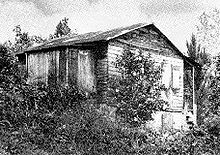 The Lares uprising, commonly known as the “Grito de Lares” occurred on September 23, 1868, but was planned well before that date by a group led by Dr. Ramon Emeterio Betances and Segundo Ruiz Belvis, who on January 6, 1868 founded the Comite Revolucionario de Puerto Rico (Revolutionary Committee of Puerto Rico) from their exile in the Dominican Republic. Betances authored several “Proclamas” or statements attacking the exploitation of the Puerto Ricans by the Spanish colonial system and called for immediate insurrection. These statements soon circulated throughout the island as local dissident groups began to organize.
The Lares uprising, commonly known as the “Grito de Lares” occurred on September 23, 1868, but was planned well before that date by a group led by Dr. Ramon Emeterio Betances and Segundo Ruiz Belvis, who on January 6, 1868 founded the Comite Revolucionario de Puerto Rico (Revolutionary Committee of Puerto Rico) from their exile in the Dominican Republic. Betances authored several “Proclamas” or statements attacking the exploitation of the Puerto Ricans by the Spanish colonial system and called for immediate insurrection. These statements soon circulated throughout the island as local dissident groups began to organize.
That same year, poetess Lola Rodriguez de Tio, inspired by Ramon Emeterio Betances’s quest for Puerto Rico’s independence, wrote the patriotic lyrics to the existing tune of La Borinquena.
Secret cells of the Revolutionary Committee were established in Puerto Rico by Mathias Brugman, Mariana Bracetti and Manuel Rojas bringing together members from all sectors of society, to include landowners, merchants, professionals, peasants, and slaves. Most were “criollos” (born on the island). The critical state of the economy, along with the increasing repression imposed by the Spanish, served as catalysts for the rebellion. The stronghold of the movement were towns located on the mountains of the west of the island.
On September 20th, Francisco Ramirez Medina held a meeting at his house in which the insurrection was planned and set to begin in Camuy on September 29. The meeting was attended by Marcelino Vega, Carlos Martinez, Bonifacio Aguero, Jose Antonio Hernandez, Ramon Estrella, Bartolome Gonzalez, Cesilio Lopez, Antonio Santiago, Manuel Ramirez, Ulises Cancela. Cancela instructed Manuel Maria Gonzalez to deliver all of the acts and important papers in regard to the meeting to Manuel Rojas. On the night of September 19 a Spanish captain stationed in Quebradillas, Juan Castañon, overheard two cell members commenting that on September 29 the troop at Camuy would be neutralized by poisoning the bread rations. Given the fact that September 29 would be a holiday for most laborers, simultaneous uprisings would occur, beginning with the cell in Camuy, and following with the ones in various other points; reinforcements would come in through a ship, “El Telegrafo”, and the cells would be reinforced by more than 3,000 mercenaries. Castañon and his men then entered Gonzalez’s residence and confiscated the documents of Medina’s meeting and alerted his commanding officer in Arecibo. The cell leaders at the Lanzador del Norte cell in Camuy were soon arrested. The rebels decided to move up the date of the revolution after the authorities on the island discovered the plan.
Proclamation of the Republic of Puerto Rico
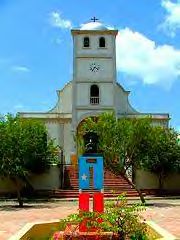
It was then agreed to first strike at the town of Lares on September 24. Some 400-600 rebels gathered on that day in the hacienda of Manuel Rojas, located in the vicinity of Pezuela, on the outskirts of Lares. Poorly trained and armed, the rebels reached the town by horse and foot around midnight. They looted local stores and offices owned by “peninsulares” (Spanish-born men) and took over the city hall. Spanish merchants and local government authorities, considered by the rebels to be enemies of the fatherland, were taken as prisoners. The revolutionaries then entered the town’s church and placed the revolutionary flag knitted by Bracetti on the High Altar as a sign that the revolution had begun and the Republic of Puerto Rico was proclaimed at (2:00 am local time) under the presidency of Francisco Ramirez Medina. The revolutionaries offered freedom to the slaves who joined them.
Confrontation at San Sebastian
The rebel forces then departed to take over the next town, San Sebastian del Pepino. The Spanish militia, however, surprised the group with strong resistance, causing great confusion among the armed rebels who, led by Manuel Rojas, retreated back to Lares. Upon an order from the governor, Julian Pavia, the Spanish militia soon rounded up the rebels and quickly brought the insurrection to an end.
Trials and amnesty
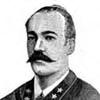 Some 475 rebels, among them Manuel Rojas, Mariana Bracetti and Juan Rius Rivera were imprisoned in Arecibo. On November 17, a military court imposed the death penalty, for treason and sedition, on all the prisoners. Meanwhile, in Madrid, Eugenio Maria de Hostos and other prominent Puerto Ricans were successful in interceding with President Francisco Serrano, who had himself just led a revolution against the monarchy in Spain. In an effort to appease the already tense atmosphere on the island, the incoming governor, Jose Laureano Sanz, dictated a general amnesty early in 1869 and all prisoners were released. Betances, Rojas, Lacroix, Aurelio Mendez, and many more were sent into exile. Juan Rius Rivera went to Cuba and became the Commander-in-Chief of the Cuban Liberation Army of the west after General Antonio Maceo’s death. Mariana Bracetti moved to the town of Anasco, where she died in 1903.
Some 475 rebels, among them Manuel Rojas, Mariana Bracetti and Juan Rius Rivera were imprisoned in Arecibo. On November 17, a military court imposed the death penalty, for treason and sedition, on all the prisoners. Meanwhile, in Madrid, Eugenio Maria de Hostos and other prominent Puerto Ricans were successful in interceding with President Francisco Serrano, who had himself just led a revolution against the monarchy in Spain. In an effort to appease the already tense atmosphere on the island, the incoming governor, Jose Laureano Sanz, dictated a general amnesty early in 1869 and all prisoners were released. Betances, Rojas, Lacroix, Aurelio Mendez, and many more were sent into exile. Juan Rius Rivera went to Cuba and became the Commander-in-Chief of the Cuban Liberation Army of the west after General Antonio Maceo’s death. Mariana Bracetti moved to the town of Anasco, where she died in 1903.
Aftermath
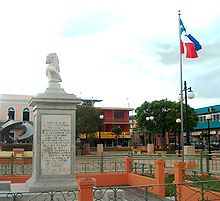 Even though the revolt in itself failed, its overall outcome was positive, since Spain granted more political autonomy to the island.
Even though the revolt in itself failed, its overall outcome was positive, since Spain granted more political autonomy to the island.
Spanish journalist Jose Perez Moris (sometimes credited incorrectly as Perez Morris) wrote an extensive book against the Grito and its participants that, while biased heavily against them, served as the most accurate account of the events from an historical perspective. From an ideological standpoint, Perez’s editorializations are still widely used by opponents of Puerto Rican independence to denounce what they perceive as the over-glorification of a minor revolt. However, studies published recently point out that the Grito had far more sympathizers — and its logistics were more widespread within Puerto Rico — than what the event’s duration suggested. During the years immediately following the Grito, there were minor pro-independence protests and skirmishes with the Spanish authorities in Las Marias, Adjuntas, Utuado, Vieques, Bayamon, Ciales and Toa Baja (Palo Seco). Historians also point to the length of Perez’s comments versus his actual reporting of events in his book as a clue: had the event really been the minor revolt he asserted it to be, it would not deserve such an extensive, negative treatment.
The Grito de Lares as a holiday
Commemorating the Grito de Lares as a holiday was outlawed by both Spanish and American, authorities in Puerto Rico, during different time periods. The Spanish prohibition lasted until its colonial rule over Puerto Rico formally ended in 1899. Consequently, besides minor yearly events by the people of Lares celebrated afterwards, the Grito was almost forgotten by most people. However, pro-independence supporters such as Jose de Diego and Luis Llorens Torres intended to popularize the idea of commemorating the event as a holiday. De Diego, for instance, requested the foundation of the University of Puerto Rico at Mayaguez (which he proposed to the Puerto Rican Legislative Assembly) to occur on 23 September, 1911, to coincide with the Grito’s anniversary.
In the late 1920s members of the Nationalist Party of Puerto Rico staged minor celebrations in the town of Lares as both historical and fund-raising efforts. When Pedro Albizu Campos gained control over the party, “frivolous” activities related to the Grito (such as the yearly fundraising dance) were terminated, and a series of rituals developed to commemorate the event in a dignified manner. One of Albizu’s better known quotes is: “Lares es Tierra Santa, y como tal, debe entrarse a ella de rodillas” (“Lares is Holy Land, and as such, it must be entered kneeling down”).
Key to the rituals associated with the Grito is the gift, given by Chilean writer Gabriela Mistral to Albizu’s family, of a tamarind tree obtained from Simon Bolivar’s estate in Venezuela. The tree was planted at the Plaza de la Revolucion with soil taken from the eighteen other Spanish-speaking Latin American countries. Albizu meant to give the Plaza a living symbol of solidarity with the struggle for freedom and independence initiated by Bolivar (who, while visiting Vieques, promised to assist the Puerto Rico independence movement, but whose promise never materialized due to the power struggles surrounding him), as well as a symbol of the bittersweet (as the trees’ fruit) hardships needed to reach Puerto Rico’s independence. As such, the Tamarindo de Don Pedro was meant to resemble the Gernikako Arbola in the Basque Country between Spain and France.
In 1969, under the administration of Governor Luis A Ferre, a statehood supporter, Lares was declared a Historic Site by the Institute of Puerto Rican Culture, and is known as the birthplace of Puerto Rican Nationalism. The Grito is not a national holiday in Puerto Rico, although it is considered as such by the University of Puerto Rico (see above).

